

Understanding inclusive education: ideals and reality. Accepted on 10 Aug 2016 Submitted on 2 Dec 2015 Introduction: inclusive ideals and practice Inclusive education faces challenges connected to ideals and action.
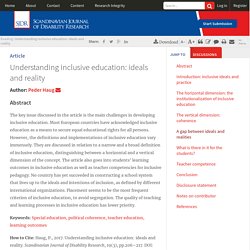
If we turn to different international organizations, such as UNICEF, UNESCO, the Council of Europe, the United Nations and the European Union, the definitions of inclusion have several common ideal elements (Hardy and Woodcock 2015; Kiuppis 2011). Inclusion then involves the right to education for all students.
Holographic Signing Avatars for Deaf Education. Social inclusion is the process of improving the terms on which individuals and groups take part in society—improving the ability, opportunity, and dignity of those disadvantaged on the basis of their identity. Social inclusion. Equality and social inclusion. Sexual orientation, gender identity and gender expression Everyone is to have equal rights, irrespective of their sexual orientation, gender identity or gender expression.
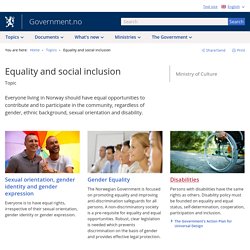
Gender Equality The Norwegian Government is focused on promoting equality and improving anti-discrimination safeguards for all persons. A non-discriminatory society is a pre-requisite for equality and equal opportunities. Robust, clear legislation is needed which prevents discrimination on the basis of gender and provides effective legal protection. Disabilities Persons with disabilities have the same rights as others. The Government’s Action Plan for Universal Design. Social Inclusion. In every country, certain groups confront barriers that prevent them from fully participating in their nation’s political, economic, and social life.
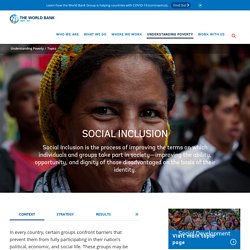
These groups may be excluded not only through legal systems, land and labor markets, but also through attitudes, beliefs, or perceptions. Disadvantage is often based on social identity, which may be derived from gender, age, location, occupation, race, ethnicity, religion, citizenship status, disability, and sexual orientation and gender identity (SOGI), among other factors. Exclusion can rob individuals of dignity, security, and the opportunity to lead a better life. There is a moral imperative to address social exclusion.
Left unaddressed, the exclusion of disadvantaged groups can also be costly. Deloitte - Inclusive Work. Inclusion diversity. WCAG 2.0 and Link Colors. WCAG 2.0 color requirements WCAG 2.0 requires that the foreground and background colors have a 4.5:1 contrast ratio at Level AA and a 7:1 contrast ratio at Level AAA.
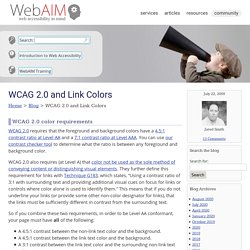
You can use our contrast checker tool to determine what the ratio is between any foreground and background color. WCAG 2.0 also requires (at Level A) that color not be used as the sole method of conveying content or distinguishing visual elements. They further define this requirement for links with Technique G183, which states, “Using a contrast ratio of 3:1 with surrounding text and providing additional visual cues on focus for links or controls where color alone is used to identify them.”
This means that if you do not underline your links (or provide some other non-color designator for links), that the links must be sufficiently different in contrast from the surrounding text. What Is Inclusion - Inclusion Imperative. The Five Moore Minutes' Podcast on Apple Podcasts. – Inclusive Education: It's not more work, it's different work! Digitalisation and adult learning: the Norwegian approach to inclusion in a digital society.
By Graciela Sbertoli The level of digitalisation in our societies is rapidly increasing.
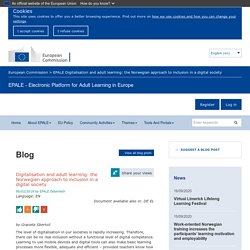
Therefore, there can be no real inclusion without a functional level of digital competence. Learning to use mobile devices and digital tools can also make basic learning processes more flexible, adequate and efficient – provided teachers know how to use them! Adults can actually learn to read and write by using digital tools. Introduction: ICT in Norwegian education Education today, no matter what the age and characteristics of the target group, should focus primarily on “learning to learn”, or giving learners the tools that empower them for further learning. The need to let Digital Competence permeate all levels of education has been officially recognised in Norway for more than a decade.
Key note at Austrian EPALE Conference 2017 by Graciela Sbertoli The SkillsPlus programme Training for immigrants Functional literacy in a digitalised society. Project Implicit. Inclusion, Exclusion, Illusion and Collusion : Helen Turnbull at TEDxDelrayBeach. Inclusion 2.0: Teaching to Diversity. The Evolution of Inclusion: The past and future of education. If You’ve Never Heard of the ‘Homework Gap’ This Video Will Shock You. The End of Average!? Disrupting the green of education! Shelley Moore: Transforming Inclusive Education. Digital Technology and Inclusive Learning. Living reference work entry.
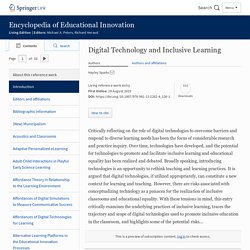
Bridging the Digital Divide. Virtual Harper Lecture: Designing a Good Life with Nick Epley. Nicholas Epley. KEEGAN: The Opposite of Loneliness. Marina Keegan Staff Reporter The piece below was written by Marina Keegan ’12 for a special edition of the News distributed at the class of 2012’s commencement exercises last week.
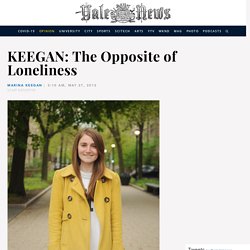
Keegan died in a car accident on Saturday. She was 22. We don’t have a word for the opposite of loneliness, but if we did, I could say that’s what I want in life. It’s not quite love and it’s not quite community; it’s just this feeling that there are people, an abundance of people, who are in this together. Yale is full of tiny circles we pull around ourselves. This scares me. But let us get one thing straight: the best years of our lives are not behind us. Of course, there are things we wished we did: our readings, that boy across the hall. But the thing is, we’re all like that. We’re so young. Social Connection - Stuff that Really Makes Us Happy. Interview with Nicholas Epley - Stuff that Really Makes Us Happy. Jeremy Spiller: The Dangers of Stereotyping in Business. Welcome to the WISE Campaign.
Inclusive Digital Education Portal – Mada. UNESCO launches guidelines for inclusive digital solutions for people with low skills and low literacy. The UNESCO-Pearson Initiative for Literacy is launching its Guidelines for Designing Inclusive Digital Solutions and Developing Digital Skills on the occasion of International Literacy Day, which this year examines integrated approaches to literacy and skills development.
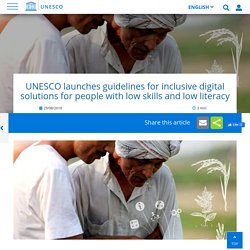
In an increasingly digitised world, people need digital and literacy skills to work, live, learn and communicate productively. Without these skills, people face marginalisation not only in the physical world but in digital realms as well. Fortunately, digital exclusion is avoidable. Purposefully designed solutions can help people—even those with very low literacy levels and nascent technology skills—navigate digital spaces and benefit from relevant applications, such as those that connect users to health services, support refugees or help farmers improve productivity. The guidelines released today will help technology pioneers build more inclusive digital services. Making digital solutions more inclusive About the project. Mountain trekking to catch a signal: online learning in the Philippines.